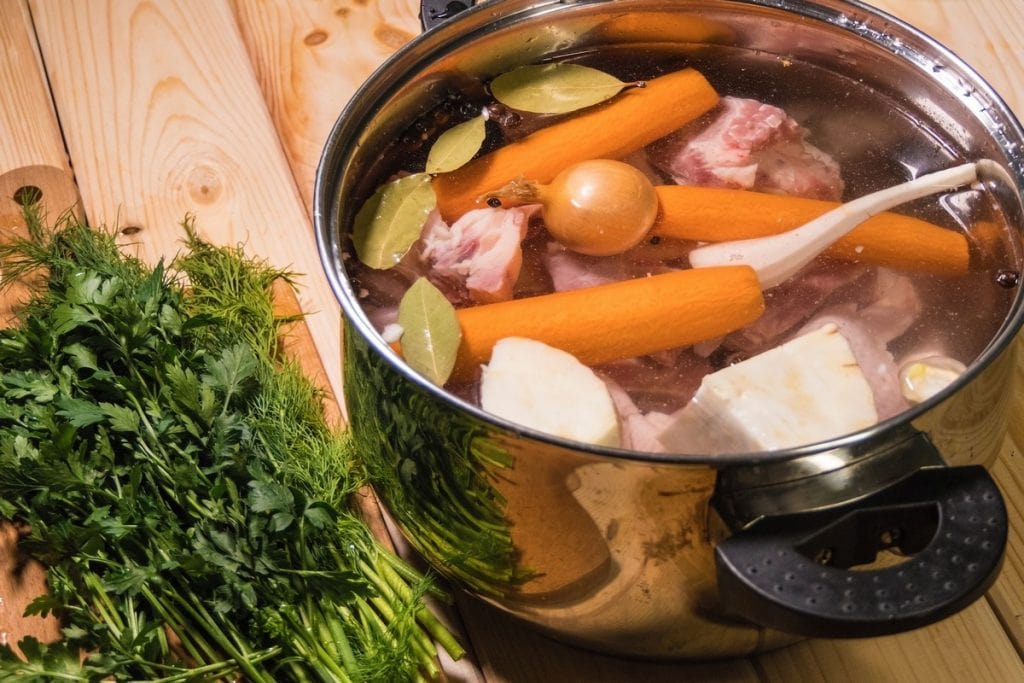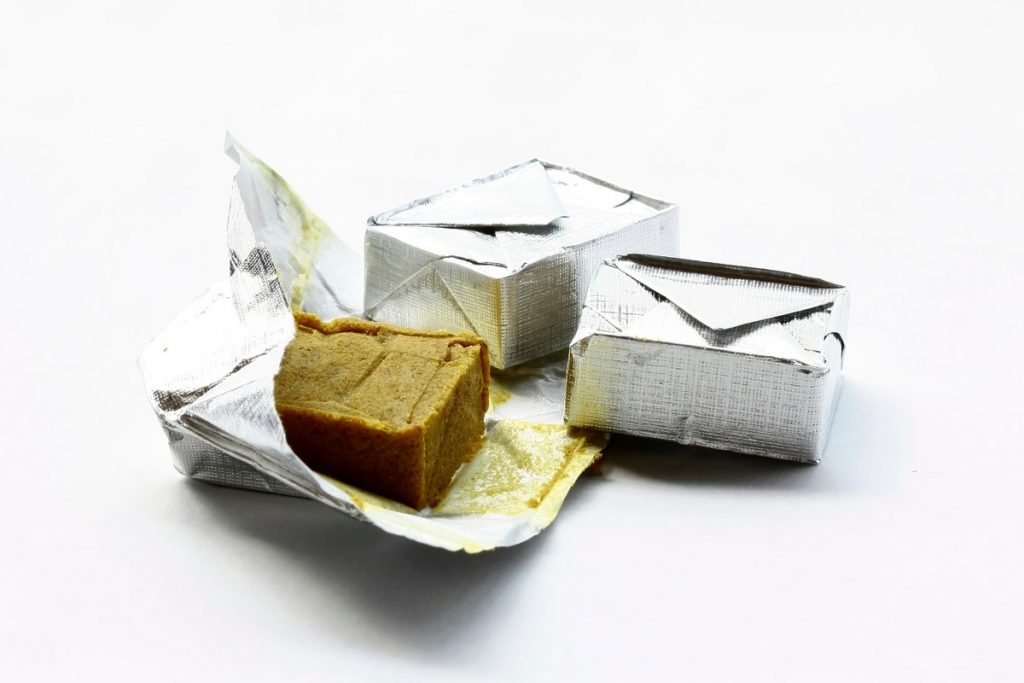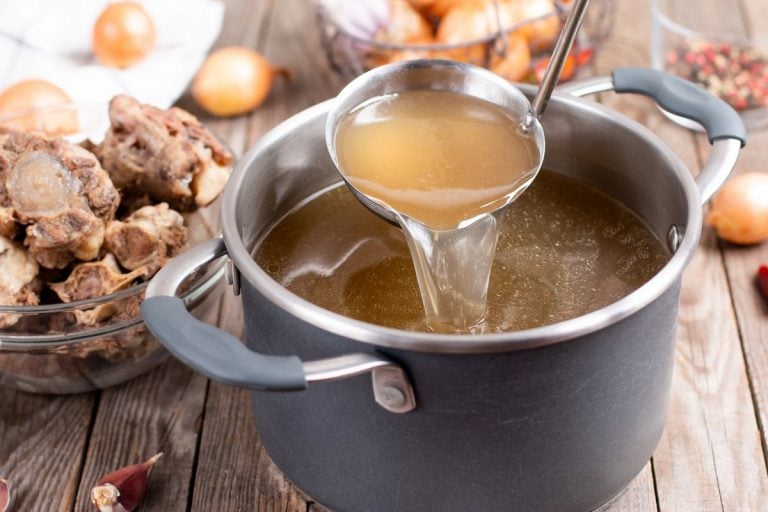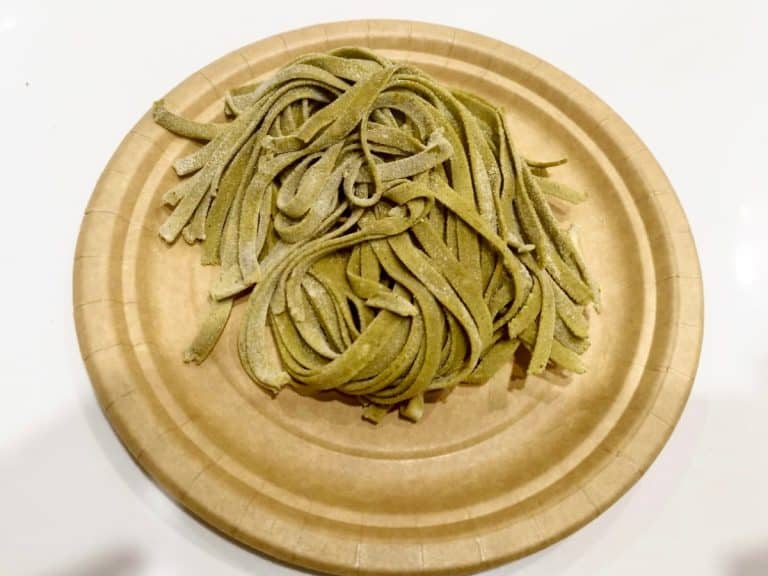Broth, the hearth of peasant houses
What's more comforting than a good bowl broth in winter? Made from meat, bones, fish or vegetables, to be combined with homemade tortellini or to be used for an infinite number of recipes, without forgetting the childhood dish par excellence: pastina, a true panacea at the end of the most difficult days. A passe-partout recipe that knows how to make young and old happy, which has always been fundamental on the table. In fact, immersion in hot liquids is one of the oldest cooking techniques: evidence of it can be found in the Bible ("Take the meat and the unleavened flatbread, put them on this stone and pour the broth"), Varro cites it among the most prized method for cooking meat (elixam), and later in the Middle Ages there are various testimonies of the family habit of hanging a cauldron near the fireplace, where day by day family members added available products to enrich the water. Once upon a time, in fact, it was customary to keep the fireplace always lit - the famous hearth of the house - to heat and cook food in large quantities in order to feed everyone, collecting every product from the garden and recovering the less valuable scraps of meat.

Broth in French cuisine and the birth of bouillons
Starting as a poor and democratic dish, over time broth has become the object of study of the most attentive chefs. France has led the way in this, transforming it into a delicious dish, inevitable in noble houses and then in the kitchens (let's not forget that one of the most famous traditional appetisers is consommé, a broth that is reduced and clarified by adding egg white). Not only that: in 19th-century Paris there were establishments specialising exclusively in the tasting of broth called bouillons, which offered the possibility of consuming the meat used for the recipe in combination. The first bouillon to open was Pierre-Louis Duval's, a butcher who in 1855 decided to start selling beef stew in broth in his shop, a dish that immediately became popular among the workers of the general markets of Les Halles. In about fifty years, the French city was filled with these restaurants, to the point of counting as many as 250 bouillons scattered in the different districts, simple and cheap places perfect for comforting the workers. Before that, however, a proud exponent of broths was the cook Antoine Carême, at the service of Napoleon, Tsar Alexander I and banker James Mayer Rothschild, who dedicated an entire treatise to the subject.

The advent of the bouillon cube
Broth made history of cooking but also of the food industry: with World War II in the 1940s, came ration cards which fixed the max limit of foods, and rationing rules became increasingly strict. Meat could only be eaten on Saturday or Sunday morning, while for cheaper offal families could expect it on Monday, Tuesday or Wednesday. To the rescue especially for city folk who were struggling to find products, substitutes soon arrived: the Ovocrema which correspond to 8 egg yolks, karkadè as a hot drink, together with chicory and barley coffee. And the stock or bouillon cube, initially sold in glass jars and then in the form of cubes, a tasty extract that became very popular in times of famine, but which actually had already existed for some time. Let's go back to France, to Carême and his treatise on broths: here we read the recipe for portable chicken glaze, which it is said was used by the cook to provide Napoleon with a hot meal even during his travels. We can also read about it in another work of the same period, "Del Viaggio ossia Istruzioni a' Viaggiatori", in which the author recommends stocking up on "dry broth bars", providing the instructions for making them starting from meat.

The first industrial bouillon cubes
In England, meanwhile, a century earlier physicist and engineer Benjamin Thompson created a primordial form of the stock cube, first solidifying bones and scraps of meat to support the army of the Duke of Bavaria, then setting up soup kitchens where dehydrated food was served with added grains. The bouillon cubes as we know them today, however, arrived thanks to the large European industries, in particular Swiss brand Maggi, the British OXO, and German Knorr. In 1847, German chemist Justus von Liebig developed an industrial system for concentrating meat into extracts, but the costs of the European ingredients were too high for mass production: the scientist then looked to other countries to create a liquid and rather viscous substance marketed by the United Kingdom company Liebig's Extract of Meat, and under the brand name Oxo in 1899. In the meantime, Carl Heinrich Theodor Knorr, owner of a coffee factory, had also sensed the urgency of focusing on dehydrated foods to feed workers, and so he began to dry condiments and vegetables trying to preserve their flavour and nutrients. In 1838 Knorr was born, one of the pioneer companies of ready-to-eat foods, followed a few decades later by Maggi, led by the young Julius Maggi and which began to offer revolutionary products such as ready-to-cook soups, liquid seasonings and finally, in 1900, the stock cube. The most famous cube in Italy, on the other hand - called Star - arrived only in 1948, the year that marks the beginning of a brilliant career for the Brianza-based company, dotted with happy intuitions such as the Sogni d'Oro camomile, tea in Star Tea filters, and above all the Gran Ragù, the first ready-to-use sauce produced industrially in Italy. A story that continues today, with a growing number of options from the big brands, from jellies to granules that can dissolve in water.

Sodium glutamate and umami
First a product of the peasant tradition, then a delicious dish destined for noble banquets, finally reduced to a tablet to make up for the lack of food and later to meet the needs of an increasingly hurried clientele: it is a long story, that of broth, which concludes with large-scale distribution and the introduction of new substances. At the beginning it consisted of cubes of vegetables and pieces of dehydrated meat, but over time the recipe for the stock cube changed: the main ingredients include salt and glutamate, a component that has often divided public opinion. But what exactly is glutamate? Technically, it is the sodium salt of glutamic acid, an amino acid isolated for the first time in 1866 by German chemist Karl Heinrich Ritthausen from gluten treated with sulfuric acid. In 1908, Japanese colleague Kikunae Ikeda found the substance in a kombu seaweed broth, a food that was not particularly tasty but capable of enhancing the taste of any other ingredient. The researcher thus patented a method for the mass production of glutamic acid salts: glutamate. It was always he who gave a definition to that particular intense taste, umami, a term that in Japanese means "tasty". The success of glutamate soon arrived in Western countries that exploited it as a flavour enhancer in packaged products, especially bouillon cubes.
by Michela Becchi

 A new upscale restaurant in a museum: this time in Calabria
A new upscale restaurant in a museum: this time in Calabria In Sicily, a company produces high-quality oil with cutting-edge agronomic and extraction technologies
In Sicily, a company produces high-quality oil with cutting-edge agronomic and extraction technologies What wines do Italians love? Here are the favorite wine regions according to consumers
What wines do Italians love? Here are the favorite wine regions according to consumers We discovered the first pasta made from olive leaf flour, it's fantastic and it comes from Ascoli
We discovered the first pasta made from olive leaf flour, it's fantastic and it comes from Ascoli Where to eat around the Eur lake in Rome
Where to eat around the Eur lake in Rome






